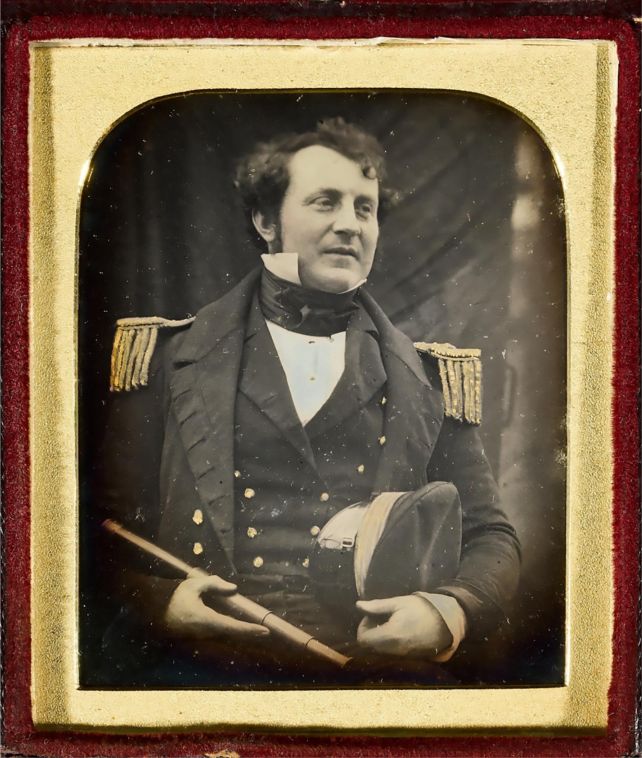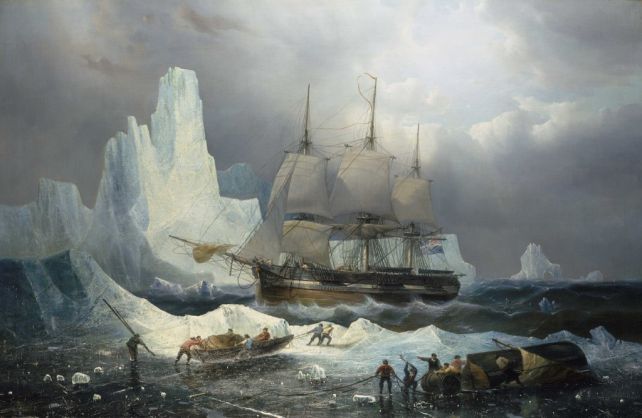Sir John Franklin’s Northwest Passage expedition is a historical moment that sparks much interest and imagination today.
The sailors who died trying to escape the Arctic following their ships Terror And Erebus that became frozen and frozen in 1846 is a testament to human endurance – and to desperation.
The bones of James Fitzjames, captain of the Erebuswho led the last desperate push home have been identified. And they tell a moving story.
In 1848, as the remaining 105 sailors surrendered their ships to the merciless fangs of the ice, Captain Fitzjames wrote a grim report, which was later found in a cairn on King William Island.
“HMS ships Terror And Erebus were abandoned April 22, while 5 miles NNW of this had been under siege since September 12, 1846,” he wrote.
“Sir John Franklin died June 11, 1847, and the total loss by deaths of the expedition to date was 9 officers and 15 men.”
Those 105 survivors never made it home and probably never left the island. Since then, many sailors’ bones have been found on that remote piece of land. And now we can finally put some of them to rest.

The identification of James Fitzjames was made by tracing known descendants and relatives of the crew members and comparing their DNA with that obtained from the bones found on King William Island.
A sample from a Fitzjames descendant was a successful match with DNA from a tooth from one of more than 400 bones recovered so far. The identification is only the second ever made of Franklin remains on King William Island.
The jawbone that matches that tooth reveals at least part of Fitzjames’ fate. Notches in the bone are consistent with butchering – suggesting that the captain’s crew, probably starved and sick, made what use of his corpse they could – they ate him.
“This shows that he predeceased at least some of the other sailors who died, and that neither rank nor status was the guiding principle in the expedition’s final desperate days as they strove to save themselves,” said archaeologist Douglas Stenton of New York University. Waterloo in Canada.

This is consistent with reports from the time: British expeditions that set out in the 1850s to find the lost explorers received reports from Inuit residents of King William Island that the remains of the survivors showed signs of cannibalism.
Later research in the 1990s revealed the veracity of the reports: bones of at least four of the individuals recovered from the archaeological finds showed evidence that they had been butchered.
But this is not a salacious story of misconduct or scandal, but of men at the limits of their endurance. They were probably hungry and sick because they had not received adequate nutrition for quite some time. Food was scarce. In such circumstances, cannibalism can be a last resort for survival.
“It shows the level of desperation the Franklin sailors must have felt to do something they would have found abhorrent,” says anthropologist Robert Park of the University of Waterloo.
“Since the expedition disappeared in the Arctic 179 years ago, there has been widespread interest in its ultimate fate, spawning many speculative books and articles and, most recently, a popular television miniseries that turned it into a horror story with cannibalism among the main consequences. Meticulous archaeological research like this shows that the true story is just as interesting, and that there is still more to learn.”

With this research, Fitzjames becomes the first identified cannibalism victim of the Franklin expedition. His recovered bones, along with the others, were placed in a cairn and marked with a memorial plaque at the site of their deaths.
Stenton and his colleagues are urging other descendants of the expedition crew members to contact them to try to identify the rest of the remains.
You can read more about Fitzjames in James Fitzjames: The mysterious man of the Franklin expedition by William Battersby. You can read more about HMS Erebus in Erebus: The Story of a Ship by Michael Palin. And you can read more about the Franklin Expedition in Frozen in Time: The Fate of the Franklin Expedition by Owen Beattie and John Geiger.
The research has been published in the Journal of Archaeological Science: reports.



